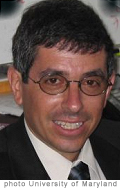|
 For many decades, hypersonic airbreathing flight, in excess of approximately five times the speed of sound, has been touted as holding great promise for military and civilian applications. Yet, there remain considerable technical challenges that must be solved before practical hypersonic craft can be realized. This presentation will review the practical, and in some cases impractical, potential uses of various types of hypersonic vehicles. The advantages and disadvantages of high-speed airbreathing systems will be reviewed in the context of mission applications, along with key design considerations. Current state-of-the-art will be presented, as will an overview of programs that are addressing various aspects of high-speed propulsion and aerodynamics, from the fundamental to systems-level design. Preliminary results of the recent flight of Boeing's amazing X-51 vehicle will be discussed, as well as some logical proposed steps to realize the full potential of hypersonic technology.
For many decades, hypersonic airbreathing flight, in excess of approximately five times the speed of sound, has been touted as holding great promise for military and civilian applications. Yet, there remain considerable technical challenges that must be solved before practical hypersonic craft can be realized. This presentation will review the practical, and in some cases impractical, potential uses of various types of hypersonic vehicles. The advantages and disadvantages of high-speed airbreathing systems will be reviewed in the context of mission applications, along with key design considerations. Current state-of-the-art will be presented, as will an overview of programs that are addressing various aspects of high-speed propulsion and aerodynamics, from the fundamental to systems-level design. Preliminary results of the recent flight of Boeing's amazing X-51 vehicle will be discussed, as well as some logical proposed steps to realize the full potential of hypersonic technology.
Dr Mark Lewis
President, American Institute of Aeronautics and Astronautics and Willis Young Prof. and Chair,
Department of Aerospace Engineering
A. James Clark School of Engineering
University of Maryland
College Park, MD 20742
(301) 405-1133 lewis@eng.umd.edu
*Speaker Profile: COLLEGE PARK, Md.—Professor Mark J. Lewis is the new chair of the A. James Clark School of Engineering's Department of Aerospace Engineering
From 2004 to 2008, Lewis served as Chief Scientist of the U.S. Air Force, where he was the chief scientific adviser to the Chief of Staff and Secretary of the Air Force, and provided assessments on a wide range of scientific and technical issues affecting the Air Force mission. Lewis is also president-elect of the American Institute of Aeronautics and Astronautics (AIAA), the premier international professional society supporting aerospace engineering and related disciplines, and the Willis Young, Jr. Professor of Aerospace Engineering at the Clark School.
Lewis joined the faculty of the Clark School in August 1988. He has conducted basic and applied research in, and taught many aspects of, hypersonic aerodynamics, advanced propulsion, and space vehicle design and optimization. His work has spanned the aerospace flight spectrum, from the analysis of conventional jet engines to entry into planetary atmospheres at hypervelocity speeds. His research activities have contributed directly to several NASA and Department of Defense programs in the areas of high-speed vehicle and spacecraft design. Lewis was the founder of the Center for Hypersonics Education and Research, and later the NASA-Air Force Constellation University Institutes Project.
At the Massachusetts Institute of Technology, Lewis received two Bachelor of Science degrees (in aeronautics and astronautics and in earth and planetary science), and Master of Science and Doctor of Science degrees in aeronautics and astronautics. He is a fellow of the AIAA and the American Society of Mechanical Engineers, a President's Fellow of the Royal Aeronautical Society, and was named an aerospace Laureate by the editors of Aviation Week and Space Technology magazine for his pioneering efforts in promoting research and development of high-speed flight.
Lewis is the author of more than 280 technical publications and has been adviser to more than 70 graduate students. He is active in national and international professional societies, with responsibilities for both research and educational policy and support. In addition, he has served on various advisory boards for the Air Force and DoD, including the Air Force Scientific Advisory Board, where he participated in several summer studies and chaired a number of science and technology reviews of the Air Force Research Laboratory. He is an adjunct with the Institute for Defense Analysis.
.
*Sourse: A. James Clark School of Engineering, University of Maryland (25 Aug 2009) |

